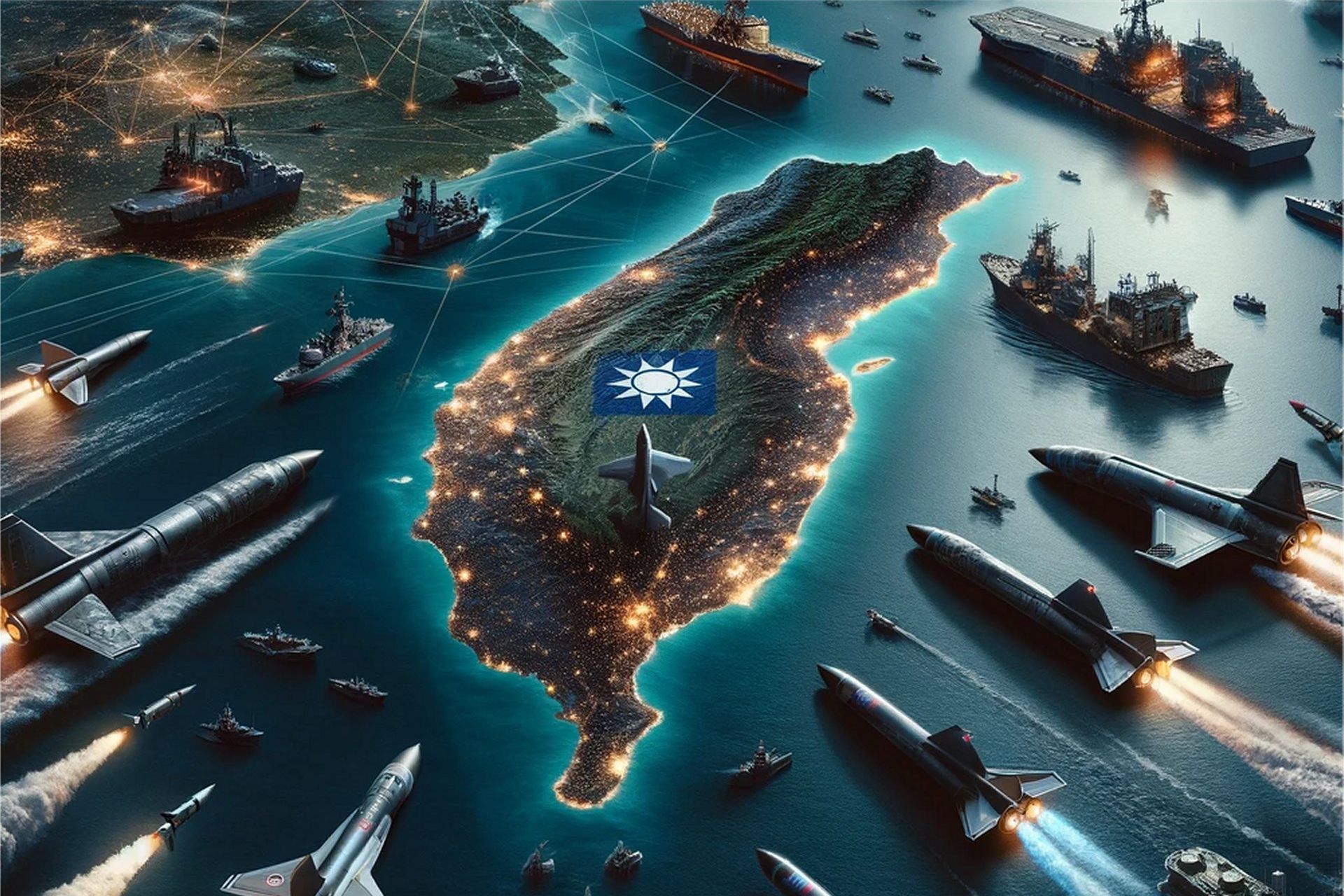Breaking news
Potential battlegrounds in a US-China conflict over Taiwan.
On May 19, 2024, the Financial Times has released a visual article exploring the critical battlefields that could shape a potential conflict between the USA and China over Taiwan. The article identifies five major military engagements that would likely influence the war's outcome.
Follow Army Recognition on Google News at this link

Artist rendering of the island of Taiwan. (Picture source: Generated by AI)
Taiwan, referred to as the "unsinkable aircraft carrier" by General Douglas MacArthur, holds significant strategic value due to its location roughly 180km from China's coast. Beijing views Taiwan as part of its territory, and the recent election of pro-independence Lai Ching-te has led to increased coercive actions from China, including incursions into Taiwan's air defense identification zone (ADIZ) and naval activities near its waters.
Control over Taiwan would allow China to breach the first island chain, a series of US-aligned islands acting as a barrier to Chinese expansion, pushing US military presence further from East Asia. The US and China have invested heavily in military capabilities that would influence the outcome of a potential conflict over Taiwan. Five critical military contests should shape such a conflict.
1. Missile Warfare
China's People’s Liberation Army (PLA) has transformed over decades, focusing heavily on missile development to counter US military dominance. The PLA's Rocket Force possesses a vast arsenal of short, medium, and intermediate-range ballistic missiles designed to threaten US aircraft carriers and military bases in Japan, South Korea, and Guam. These missiles, including the hypersonic Dongfeng-17 and the "carrier killer" Dongfeng-26, aim to deny the US the ability to dominate air and sea regions near Taiwan.
The US plans to counter these capabilities by deploying precision-strike missiles and hypersonic weapons like the Dark Eagle to locations such as Japan and Guam, as well as enhancing Taiwan's own missile defenses.
2. Geographic Strategy
The US military is adapting to China's missile threat by dispersing its forces across multiple small bases, making them harder to target. The US Air Force is shifting aircraft to smaller, less detectable airfields, while the Navy and Marine Corps are training to operate from remote islands and coastal jungles, using advanced reconnaissance and communications systems. This dispersion strategy aims to complicate PLA targeting efforts, particularly through narrow passages like the Miyako Strait and Bashi Channel.
3. Submarine Warfare
US submarines, particularly nuclear-powered ones, remain a crucial advantage, capable of covertly targeting Chinese ships and aircraft. However, China is narrowing the technological gap with advancements in anti-submarine warfare (ASW) and the deployment of new submarines. The US, in collaboration with allies like Australia through the Aukus pact, aims to enhance its submarine capabilities over the coming decades.
4. Space-Based Operations
Satellites play a vital role in modern warfare, providing surveillance, guidance, and early warning capabilities. China has significantly expanded its satellite network for ISR (Intelligence, Surveillance, and Reconnaissance), challenging the US's traditional dominance in space. The US is enhancing its space monitoring and developing countermeasures against potential Chinese threats, including cyber and electronic warfare capabilities.
5. Nuclear Considerations
The rapid expansion of China's nuclear arsenal and delivery systems introduces a critical dimension to any conflict over Taiwan. The US must consider whether its commitment to Taiwan is worth the risk of nuclear war with China. This includes assessing the potential for limited nuclear strikes and the implications for broader strategic stability.


























